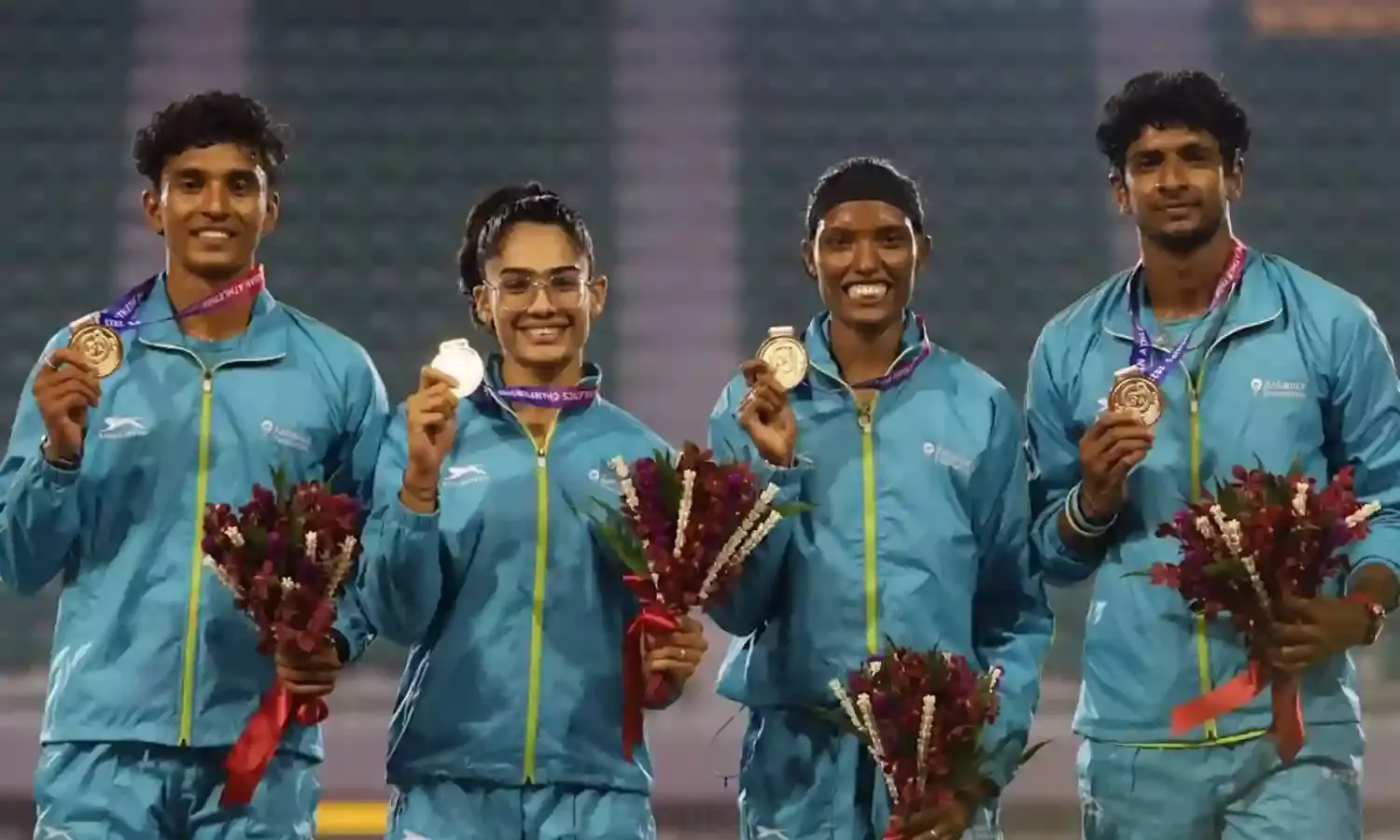Palpable Surge In India’s Sporting Fortunes
The rise has been gradual

To put in proper perspective the palpable surge in India’s fortunes in the international sporting arena one must recall one simple, stark fact. In four Olympic Games: Montreal (1976), Los Angeles (1984) Seoul (1988) and Barcelona (1992), the Indian contingent came back empty handed. Not even one solitary medal.
From 1928 to 1972 India had just the medals won by the hockey team allied to K.D. Jadhav’s wrestling bronze at Helsinki in 1952. In 1980 at Moscow India taking advantage of a depleted field won the hockey Gold but the next medal didn’t come till 1996 when Leander Paes won a Bronze in the tennis singles event.
In a way the medal won by Paes turned out to be a path breaker for thereafter India went from Bronze (weightlifter Karnam Malleswari at Sydney in 2000) to Silver (shooter Rajyavardhan Singh Rathore at Athens in 2004) to Gold (shooter Abhinav Bindra at Beijing in 2008). The rise then was gradual.
At London in 2012 India finished with six medals only to improve upon this at Tokyo in the last Games a couple of years ago with seven including Neeraj Chopra’s gold.
In the past Indian sporting heroes ploughed on their own lonely furrow in the absence of any system or adequate encouragement. They, with a combination of talent and hard work, made an impact on the international arena.
Thus we had individual stars like Wilson Jones, Michael Ferreira, Geeth Sethi, Ramanathan Krishnan, Vijay Amritraj, Prakash Padukone, P Gopichand, Milkha Singh, PT Usha, Viswanathan Anand and a few others who made good at the international arena at various levels.
Indian sportsmen and women were a force to reckon with at the Asian and even Commonwealth level but faltered badly at the Olympics or world meets. In the new millennium there has been a palpable surge in India’s sporting fortunes at international meets and one would like to think that besides the hard work put in by the individual concerned there is also finally a system in place that nurtures world beaters.
For starters the Central government over the years has certainly done more than its bit by not only rewarding the champions with generous cash awards but also by increasing the sports budget almost every year. Also government authorities have done well to get out of the way and allow the top sportsmen and women to train the way they want and with whom they want.
There is also a model in place that identifies and matches talented athletes with international trainers and resources. This is facilitated by private companies like the JSW Foundation that scout athletes, make international connections and cover funding gaps for training.
There is also Olympic Gold Quest founded by Geeth Sethi and Prakash Padukone which strives to complement the efforts of the Central government and various sports federations in identifying and funding the most deserving medal prospects for the Olympic Games. There is little doubt that someone like Neeraj Chopra is a result of this system, for he has trained with leading coaches Uwe Hohn and Klaus Bartonietz.
But this is also true of other sports notably badminton and chess which explains the phenomenal rise Indian players have made in the two sports. The badminton stars have won medals – even Gold – at Olympics and world meets.
In chess, a country which had just one GM in Anand 35 years ago has now 83 with the latest sensation R Praggnanandhaa being the best prospect since the pioneering great himself. Sponsorship too has reached unprecedented levels for corporates have realised the prestige a successful athlete brings to the table.
Yes, India has some way to go before it is able to match the sporting superpowers. There is a resurgence of sorts in hockey while the boxers, wrestlers, shooters and weightlifters have kept the Indian flag flying high at the Olympics and world meets as also cueist Pankaj Advani.
The golfers have made some headway but India is nowhere in major sports like football, aquatics, gymnastics, cycling, fencing, volleyball and basketball even as the fall in tennis standards since the heady days of the Krishnans and the Amritrajs is distressing.
The problem probably lies in the fact that even the increased budget helps only a few sports. There is still much to be done with regard to the grassroots infrastructure.
Besides money what is needed is improved functioning of the various sports associations and scouting for talent spotting over a larger area for as we have seen some of India’s sporting heroes have come from far flung places and not just the major cities.
But a start has been made in the right direction and there is little doubt that many Indian sportsmen and women are now formidable opponents on the international arena in several disciplines and this is not something that could be stated categorically about two decades ago.



